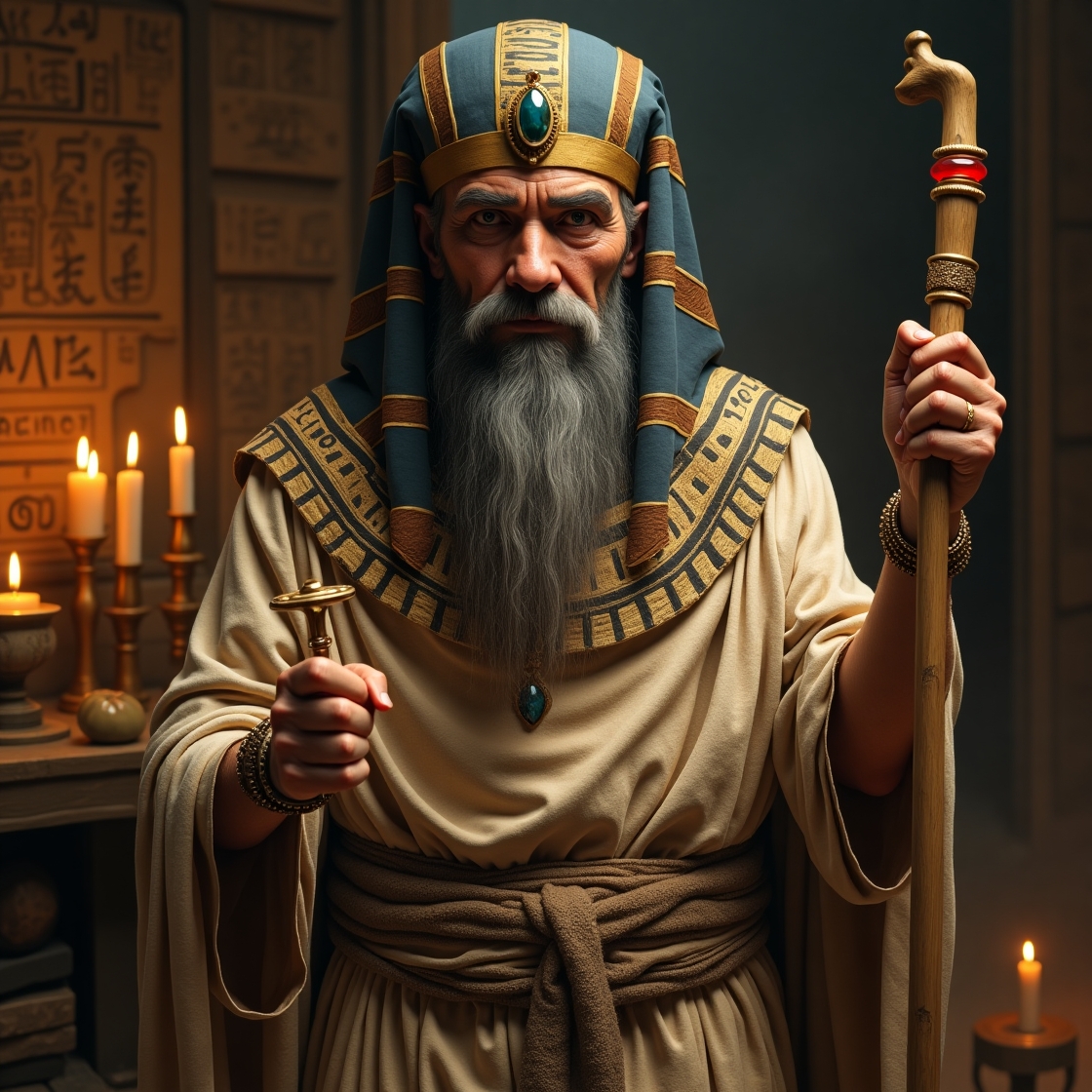Shamanism in Ancient Egypt:
When we think of shamanism, we often picture indigenous healers from Siberia or the Americas, journeying into the spirit world to heal and guide their communities. But did you know that ancient Egypt also had its own shamanic-like practices? While the term "shamanism" wasn’t used in ancient Egypt, many of their spiritual traditions share striking similarities with shamanic practices. Let’s take a closer look at the mystical world of ancient Egyptian spirituality and uncover its shamanic roots.
The Pharaoh: A Divine Shaman
In ancient Egypt, the Pharaoh wasn’t just a king—he was seen as a bridge between the gods and the people. Imagine a shaman who communicates with the spirit world to bring blessings and maintain balance. The Pharaoh performed sacred rituals to ensure the land was fertile and that cosmic order (called Ma’at) was preserved. This role of mediator between the divine and the earthly is a key shamanic trait.
The Soul’s Many Layers: Ba and Ka
The ancient Egyptians believed in multiple parts of the soul, like the Ba (your personality or spirit) and the Ka (your life force). Shamans often work with the soul, helping to heal or retrieve lost parts of it. In Egypt, priests and healers performed rituals to protect and guide these soul aspects, especially during life and after death. This idea of soul work is a core part of shamanism.
Dreams and Visions: Messages from the Gods
Dreams were a big deal in ancient Egypt. They were seen as messages from the gods or the spirit world. People would even sleep in special temple chambers to receive divine guidance or healing through their dreams. This practice, called "dream incubation," is similar to how shamans enter altered states of consciousness to connect with the spirit world.
Rituals, Symbols, and Sacred Objects
Ancient Egyptians loved their rituals and symbols! They used amulets, sacred texts (like the Book of the Dead), and powerful objects like the Ankh (symbol of life) and the Djed pillar (symbol of stability) to protect, heal, and guide the soul. These tools are much like the sacred objects shamans use in their ceremonies to connect with spiritual energies.
Animal Spirits and Gods
Many Egyptian gods were linked to animals. For example, Horus was associated with the falcon, Anubis with the jackal, and Bastet with the cat. These animal connections remind us of shamanic "spirit animals" or totems, which represent different powers and qualities. The Egyptians saw these animal-linked gods as protectors and guides, much like how shamans work with animal spirits.
Healing with Magic and Medicine
Ancient Egyptian healers combined physical treatments with spiritual practices. They used prayers, incantations, and rituals to call on the power of the gods for healing. This blend of medicine and magic is a hallmark of shamanic healing, where the spiritual and physical worlds are deeply connected.
The Journey to the Afterlife
The ancient Egyptians believed in a complex journey to the afterlife, where the soul had to navigate the Duat (the underworld) and face challenges. This journey is similar to shamanic voyages into the spirit world, where the shaman guides souls or retrieves lost parts of the soul. The Book of the Dead was like a guidebook for this spiritual journey, filled with spells and advice.
Priests and Priestesses: Ancient Shamans
Egyptian priests and priestesses acted as mediators between humans and the gods. They conducted rituals, interpreted omens, and communicated with the divine roles that are very much like those of a shaman. They were the spiritual caretakers of their community, ensuring harmony between the earthly and the divine.
Altered States of Consciousness
There’s evidence that ancient Egyptians used music, dance, and possibly even natural substances to enter altered states of consciousness. These states allowed them to connect with the spirit world, receive visions, and perform healings—just like shamans do in other cultures.
Ma’at: The Balance of the Universe
At the heart of Egyptian spirituality was Ma’at, the concept of cosmic order, balance, and truth. Maintaining Ma’at was essential for the well-being of the world. Shamans, too, focus on restoring balance and harmony, whether within a person, a community, or the cosmos.
The Shamanic Heart of Ancient Egypt
While the ancient Egyptians didn’t call it "shamanism," their spiritual practices were deeply shamanic in nature. From the Pharaoh’s role as a divine mediator to the use of rituals, symbols, and altered states of consciousness, the echoes of shamanism are clear. By exploring these ancient traditions, we can better understand how humanity has always sought to connect with the spiritual world and find balance in the universe.
So, the next time you see an image of an Egyptian god or hear about the Book of the Dead, remember you’re glimpsing into a world where the spiritual and physical realms were deeply intertwined—a world not so different from the shamanic traditions we know today.


Comments ()